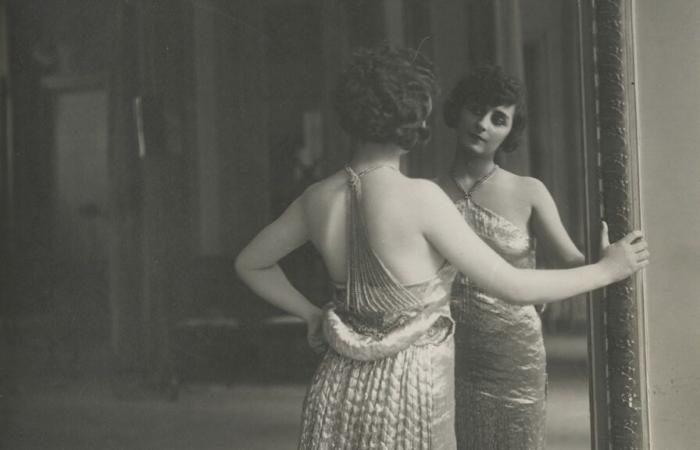On the occasion of Paris Photo, the Museum of Decorative Arts opens its doors and hosts a brand new exhibition dedicated to “model deposit”, a widespread practice in fashion in the 1920s and 1930s. In an era where everything is an imitation, this legal recourse of yesteryear allowed the major luxury houses to fight against copies of all kinds. In fact, the pre-war period was a period of cultural excitement where a plethora of creators were born: Elsa Schiaparelli, Jean Patou or even Madeleine Vionnet. In reaction to an anxiety-provoking social and political context, the Parisian bourgeoisie established itself in the avant-garde with innovative ideas and new styles (one only has to see the surrealist imprint of the one nicknamed Schiap !). Now, these past archives represent an endless source of inspiration for luxury brands. Until January 26, 2025, Fashion in models: Photographs from the 1920s and 1930s is revealed in the heart of Paris.
The Museum of Decorative Arts takes on fashion photography
In Paris, counterfeiting raged at the heart of this interwar period. Thus, cinema and documentaries bear witness to all its fraudulent reproductions which are based on the clothing of major French houses. In order to overcome this phenomenon, the latter will use the model deposit, a cliché directly inspired by judicial photography. Coming under the domain of intellectual property, model registration consists of capturing the tiniest details of an outfit on a model, sometimes from the front, sometimes from the side.
Thanks to its dated and serial numbered evidence, the houses can defend themselves in the event of a lawsuit like Madeleine Vionnetspecialist in drapes and voluptuous fabrics. Initiator of the bias cut (a cut which makes the textile more flexible and therefore adapts better to the body), Vionnet will see his invention cowardly copied. In 1921, she filed a lawsuit against her detractors, which she won hands down, thus establishing the model deposit as a creative guarantee. Haute couture work is finally taken into account.
More than a photograph, the model deposit bears witness to a movement and a particular artist. Most of the 120 images on display form the immutable heritage of luxury, those which established a true French art of living. We then find the most illustrious names in the industry:Hermes passing by the sisters Callot. In addition, the signatures at the bottom of the photos are prestigious: Man Ray, Paul Béjat, Therese Bonney. From now on, the 8th art becomes an ideal tool for the fashion press but also for sales. However, design registration is not as important because it belongs to the private and legal sector.






